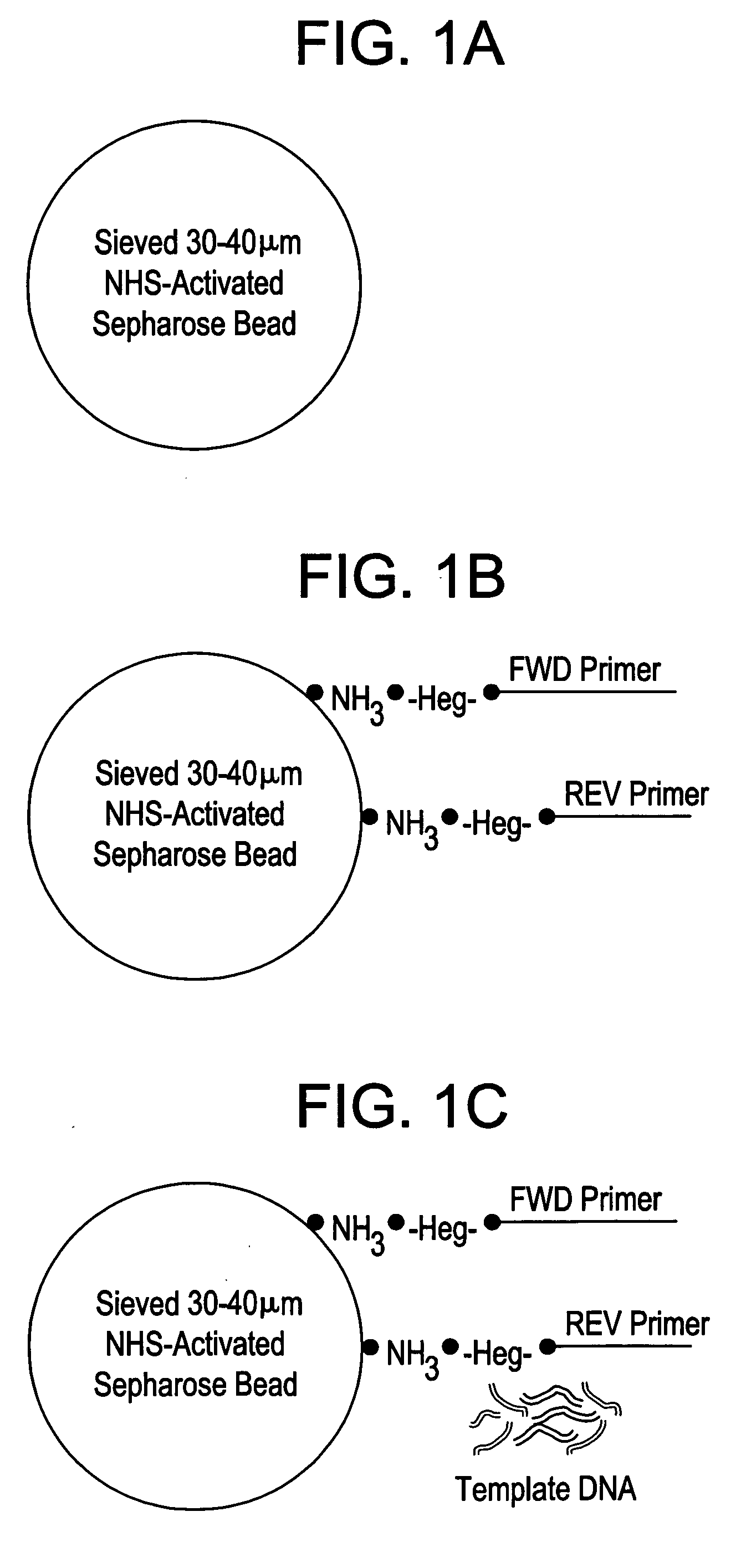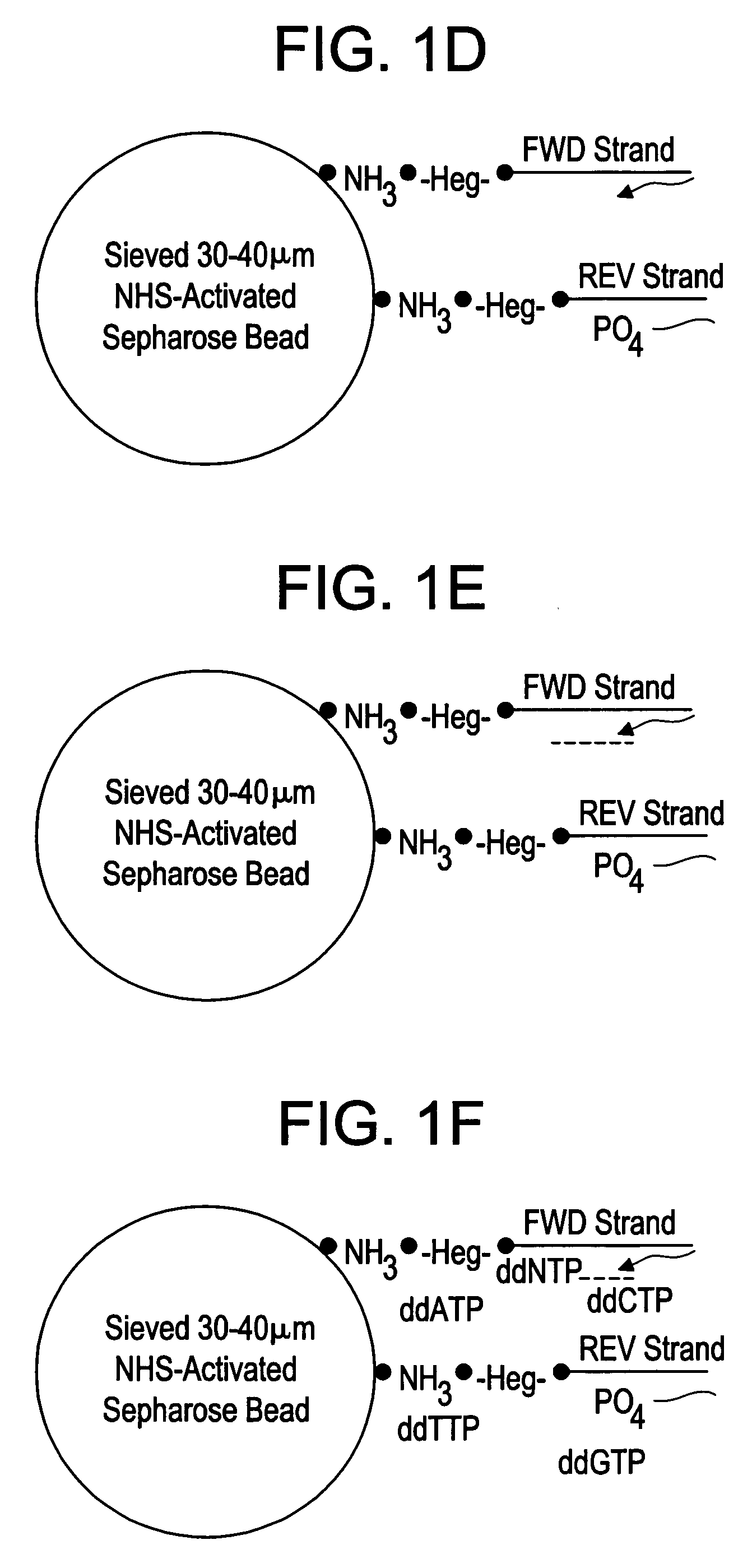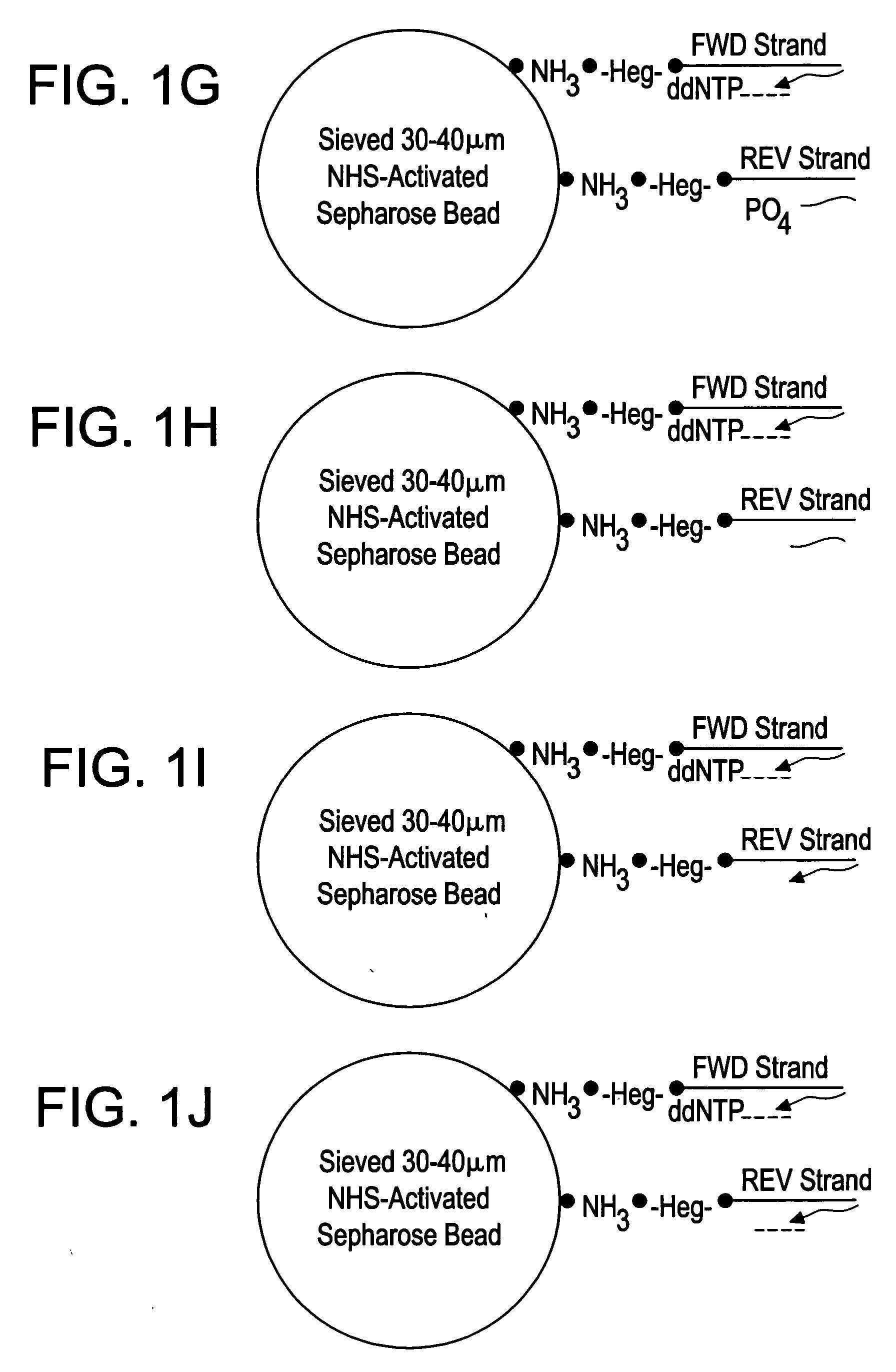Double ended sequencing
a technology of double-ended sequencing and strand separation, applied in the field of double-ended sequencing, can solve the problems of increasing geometrical disadvantages of ronaghi's method, requiring a labor-intensive step of strand separation, and suffering from the same ronaghi's method, so as to prevent further elongation of the unblocked primer
- Summary
- Abstract
- Description
- Claims
- Application Information
AI Technical Summary
Benefits of technology
Problems solved by technology
Method used
Image
Examples
example 1
Template Quality Control
[0076] The success of the Emulsion PCR reaction, a first step in the methods of this invention, was found to be related to the quality of the single stranded template species. Accordingly, the quality of the template material was assessed with two separate quality controls before initiating the Emulsion PCR protocol. First, an aliquot of the single-stranded template was run on the 2100 BioAnalyzer (Agilient). An RNA Pico Chip was used to verify that the sample included a heterogeneous population of fragments, ranging in size from approximately 200 to 500 bases. Second, the library was quantitated using the RiboGreen fluorescence assay on a Bio-Tek FL600 plate fluorometer. Samples determined to have DNA concentrations below 5 ng / μl were deemed too dilute for use.
example 2
DNA Capture Bead Synthesis
[0077] Packed beads from a 1 mL N-hydroxysuccinimide ester (NHS)-activated Sepharose HP affinity column (Amersham Biosciences, Piscataway, N.J.) were removed from the column. The 30-25 μm size beads were selected by serial passage through 30 and 25 μm pore filter mesh sections (Sefar America, Depew, N.Y., USA). Beads that passed through the first filter, but were retained by the second were collected and activated as described in the product literature (Amersham Pharmacia Protocol # 71700600AP). Two different amine-labeled HEG (hexaethyleneglycol) long capture primers were obtained, corresponding to the 5′ end of the sense and antisense strand of the template to be amplified, (5′-Amine-3 HEG spacers gcttacctgaccgacctctgcctatcccctgttgcgtgtc-3′; SEQ ID NO:23; and 5′-Amine-3 HEG spacers ccattccccagctcgtcttgccatctgttccctccctgtc-3′; SEQ ID NO:24) (IDT Technologies, Coralville, Iowa, USA). The primers were designed to capture of both strands of the amplification...
example 3
PCR Reaction Mix Preparation and Formulation
[0078] As with any single molecule amplification technique, contamination of the reactions with foreign or residual amplicon from other experiments could interfere with a sequencing run. To reduce the possibility of contamination, the PCR reaction mix was prepared in a in a UV-treated laminar flow hood located in a PCR clean room. For each 600,000 bead emulsion PCR reaction, the following reagents were mixed in a 1.5 ml tube: 225 μl of reaction mixture (1× Platinum HiFi Buffer (Invitrogen)), 1 mM dNTPs, 2.5 mM MgSO4 (Invitrogen), 0.1% BSA, 0.01% Tween, 0.003 U / ∞l thermostable PPi-ase (NEB), 0.125 μM forward primer (5′-gcttacctgaccgacctctg-3′; SEQ ID NO:1) and 0.125 μM reverse primer (5′-ccattccccagctcgtcttg-3′; SEQ ID NO:2) (IDT Technologies, Coralville, Iowa, USA) and 0.2 U / μl Platinum Hi-Fi Taq Polymerase (Invitrogen). Twenty-five microliters of the reaction mixture was removed and stored in an individual 200 μl PCR tube for use as a ne...
PUM
 Login to View More
Login to View More Abstract
Description
Claims
Application Information
 Login to View More
Login to View More - R&D
- Intellectual Property
- Life Sciences
- Materials
- Tech Scout
- Unparalleled Data Quality
- Higher Quality Content
- 60% Fewer Hallucinations
Browse by: Latest US Patents, China's latest patents, Technical Efficacy Thesaurus, Application Domain, Technology Topic, Popular Technical Reports.
© 2025 PatSnap. All rights reserved.Legal|Privacy policy|Modern Slavery Act Transparency Statement|Sitemap|About US| Contact US: help@patsnap.com



